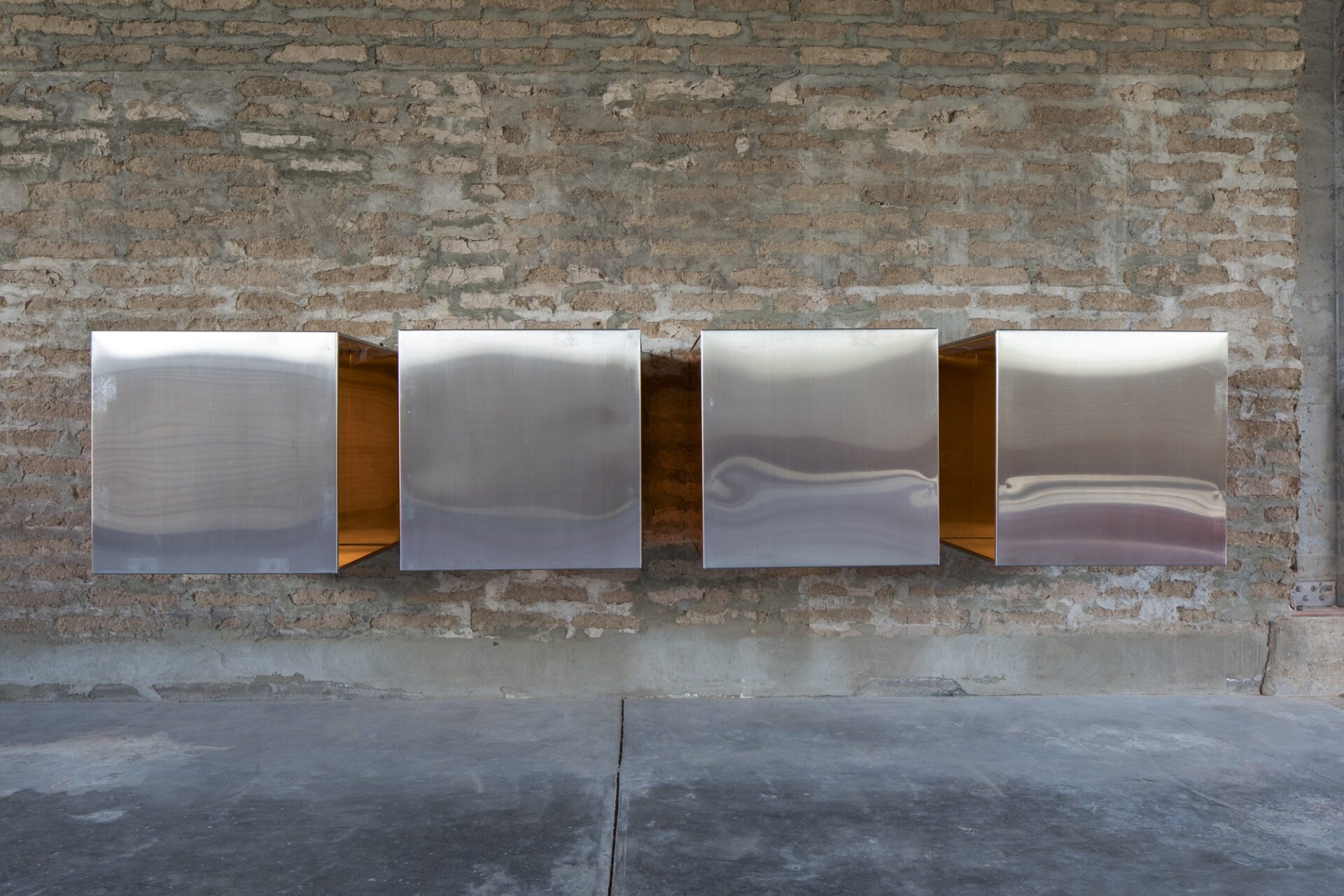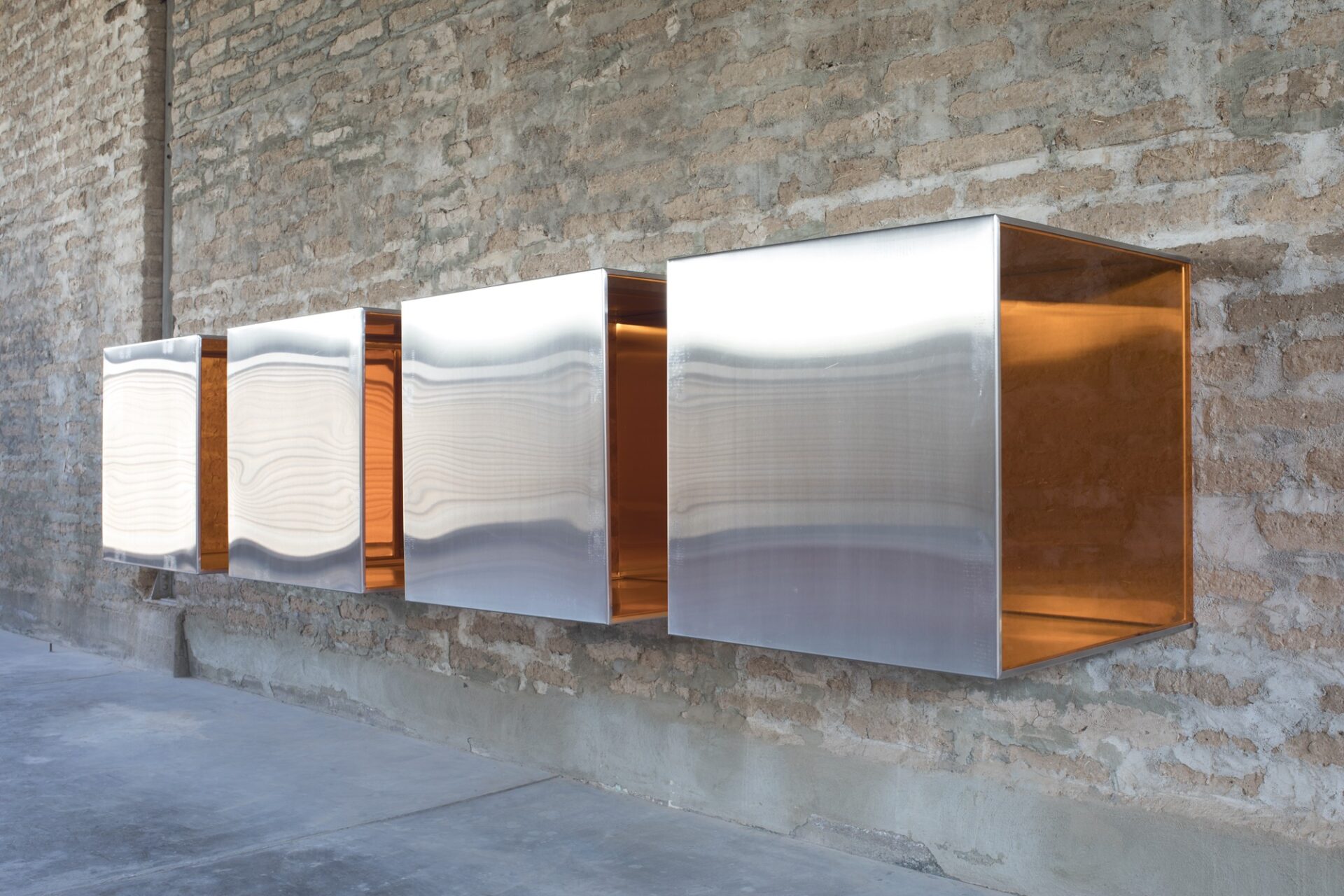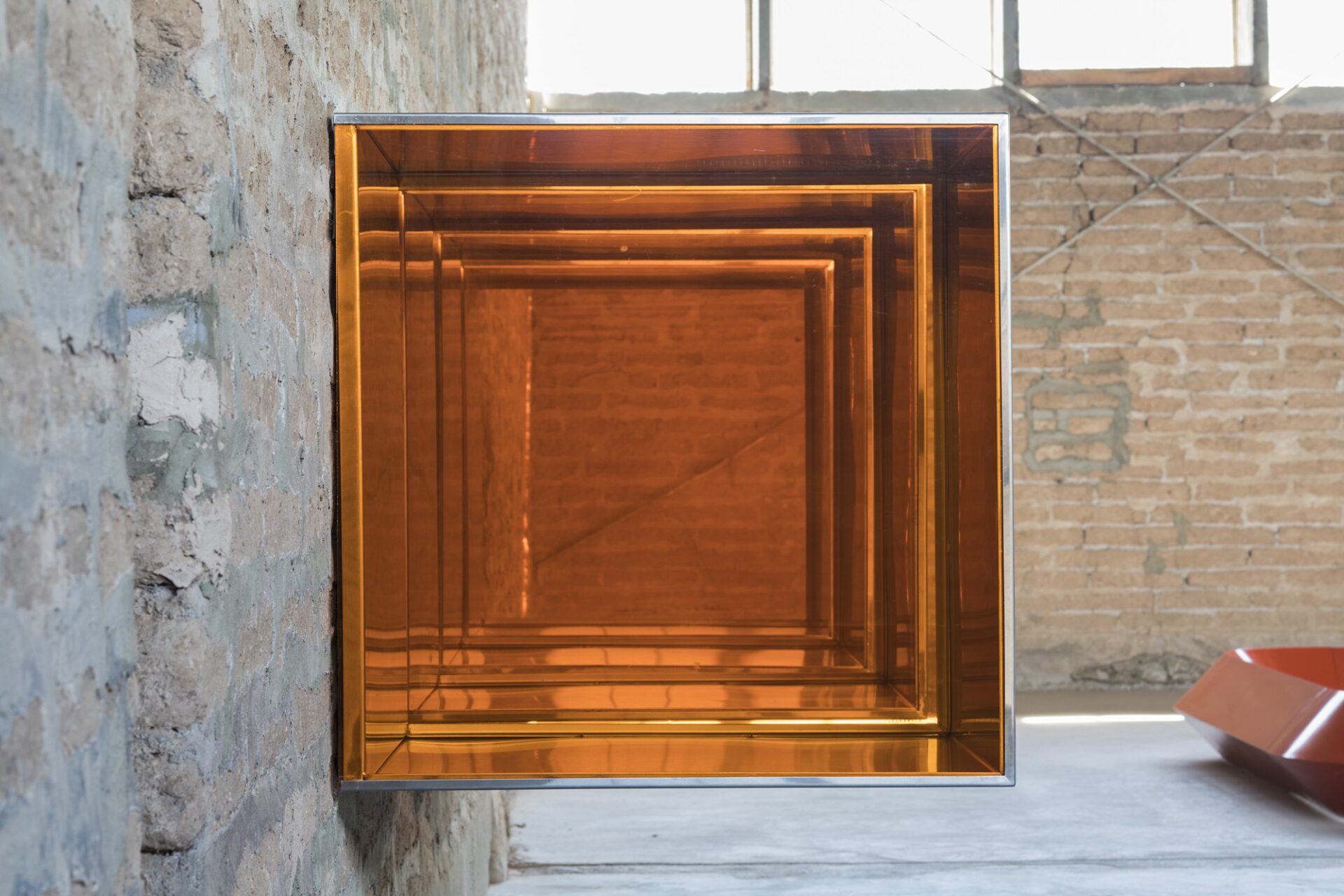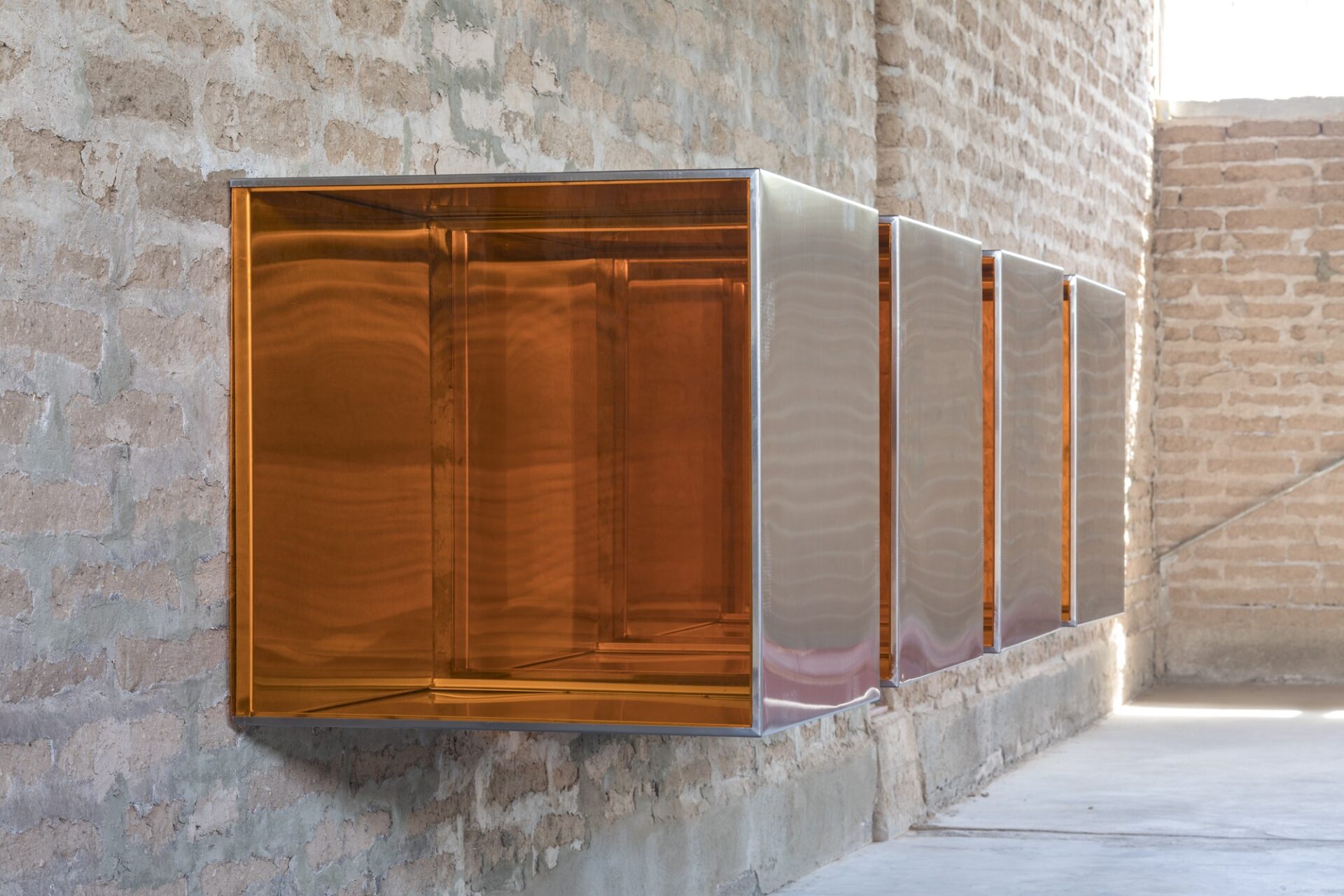Donald Judd said in 1971, “The use of plexiglass exposes the interior, so the volume is opened up. . . . It’s fairly logical to open it up so the interior can be viewed. It makes it less mysterious, less ambiguous.”1 The transparent amber acrylic sides of each unit open a new view from every vantage point in the 180-degree viewing radius around the work, which is installed so that all sides, including the top, are visible. “In most of my pieces,” Judd said, “there are no front or sides—it depends on the viewing position of the observer.”2
Judd exhibited this work in his first solo exhibition at Leo Castelli Gallery, New York (Don Judd, February 5–March 2, 1966), with other works from 1964 and 1965. It is the first multi-unit work that Judd made for the wall.



